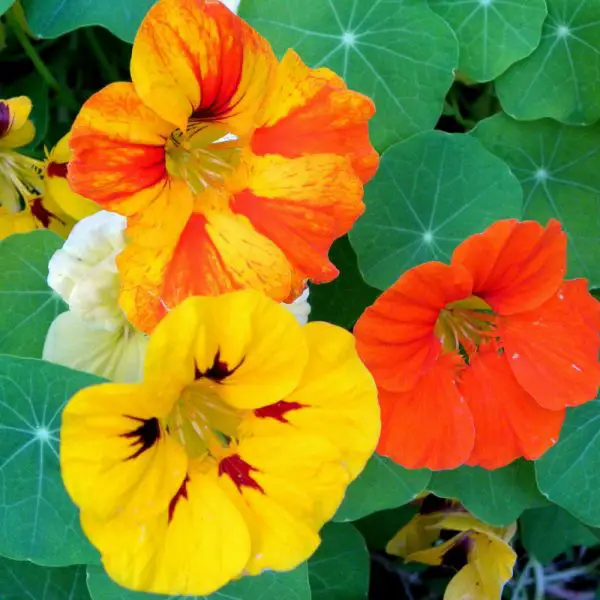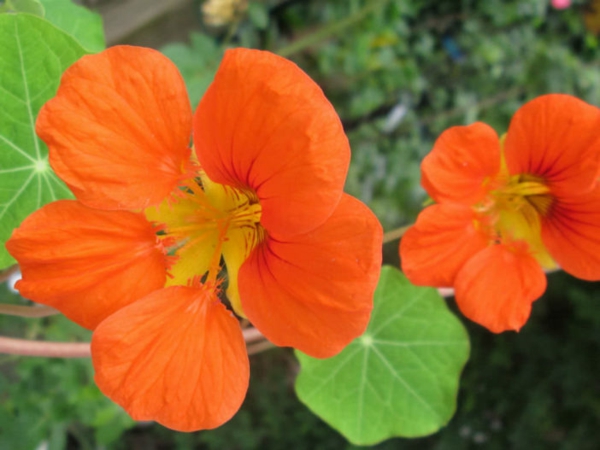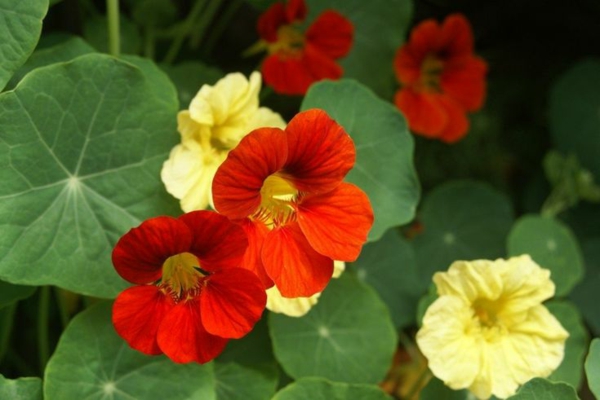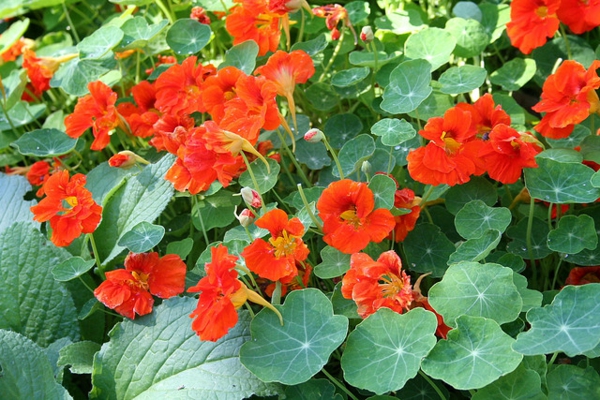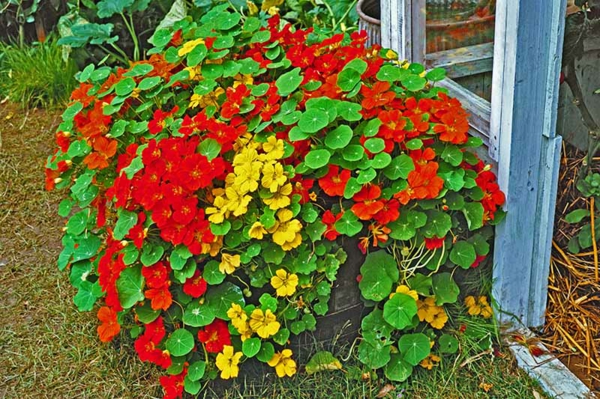Nasturtium is a well-known decorative plant for outdoor use. It enriches both the garden and the balcony. In the bed or in the pot, this beauty doesn’t need much to please the hobby gardener with her flowers. If you want to enjoy the ornamental plant in your own outdoor area in summer, you should pay attention to a few things when caring for this exotic plant.
The nasturtium has beautiful flowers in various bright colors
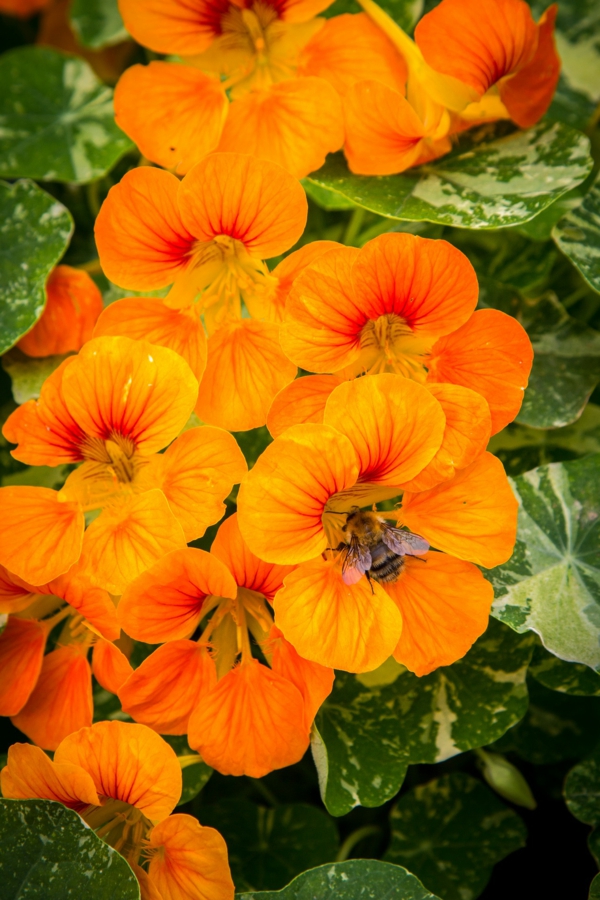
The nasturtium – general info
Nasturtium or Indian cress are other names by which the beautiful plant is known. The plant comes from South America and has flowers shaped like the hoods of Capuchin monks. That’s why it bears this name. The best-known species of the plant are the large nasturtium and the small nasturtium. The first reaches a height of 1 to 3 m, and the second has a small and bushy habit. Among them, there are many varieties that have flowers of all different colors: pastel yellow, pink, bright orange and red. In some varieties, you can even see flowers of different colors on a single specimen. So you have a wide choice depending on your own preferences and needs.
The nasturtium grows very quickly – flat or climbing. So you can let the plant grow over fences and pergolas and not just plant it in the bed.
The bright flowers of the nasturtium are a great splash of color in every ridge and on every balcony. In addition to being an ornamental plant, the flower is also a popular crop. For example, you can also grow the nasturtium in the herb garden. The flowers of the plant are even edible and can be a wonderful decoration of various treats. The salad also tastes fantastic with it!
In trade it is denoted by Nasturtium the large and the small nasturtium
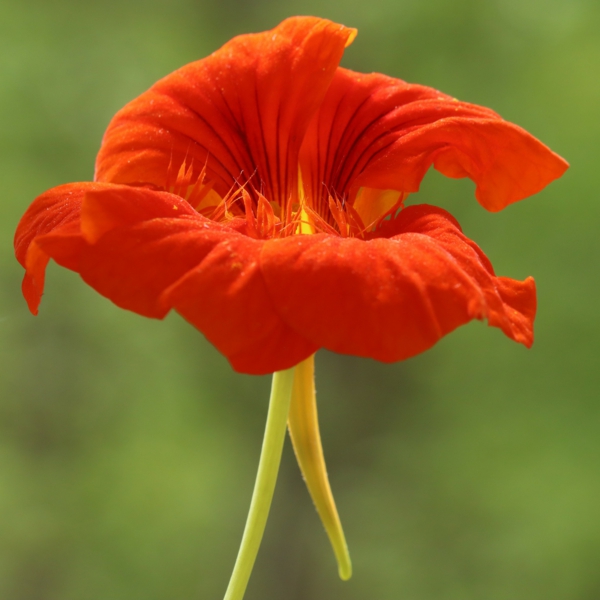
Useful care tips
The popular ornamental plant is very sensitive to cold and is therefore cultivated annually. But if you have chosen a suitable place for them, then they will thrive without much care.
The nasturtium and the garden cress are great eye-catchers in the garden
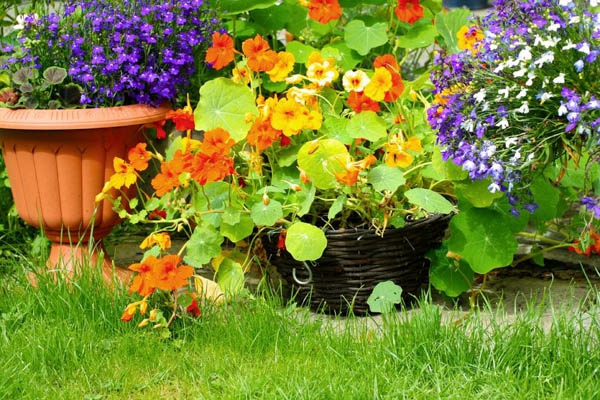
location and soil
The location should be sunny, but the plant also thrives in semi-shade. The nasturtium feels most comfortable in a moist substrate. The beautiful plant needs a lot of water. A nutrient-rich soil is very important. But if the soil is too high in nutrients, the plant will form many more leaves instead of flowers.
Characteristic of the nasturtium is that it cannot tolerate waterlogging. On hot summer days it is even advisable to water the plant in the morning and in the evening. In addition, lime-free or rainwater is recommended.
If you want to plant the nasturtium in a pot, you should choose compact-growing varieties. The reason: Many varieties grow sprawling, so that the long shoots crawl on the ground. Others thrive as climbers.
The soil of the nasturtium must not dry out under any circumstances
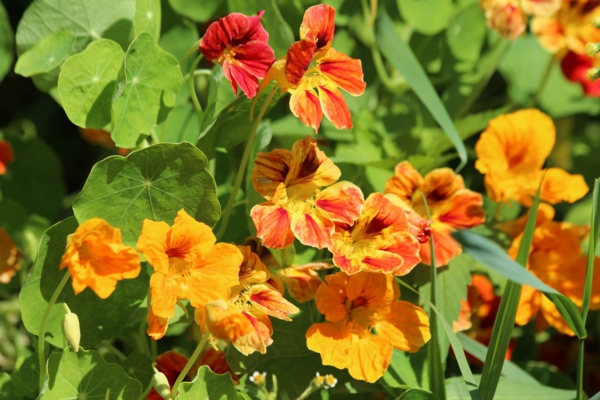
fertilizing and cutting
For the garden flower, it is enough to provide the soil with compost before planting. Then it would be unnecessary to continue fertilizing during the year. The plants in the box or bucket, on the other hand, are very happy about fertilizer sticks. But be careful not to over-fertilize the plant. Because then wash the leaves and not the flowers. If the soil is rich in humus, then you have to fertilize lightly with organic fertilizer.
A pruning is not necessary with the nasturtium. In some cases, however, it takes up too much space. If necessary, the plant can tolerate pruning. But withered parts and seed pods should be removed regularly. This is a good prerequisite for the plant to flower beautifully throughout the summer.
If you want to sow the nasturtium, then simply let a few seed pods mature. But if you don’t want to change the location of the plant, then you usually don’t have to, because the seeds sow themselves.
One last tip from us: In general, the nasturtium is resistant to many diseases and pests because of the high mustard oil content. But there are two pests that threaten the plant. So protect them from cabbage whites and aphids.
The colorful flowers are what makes the nasturtium so special
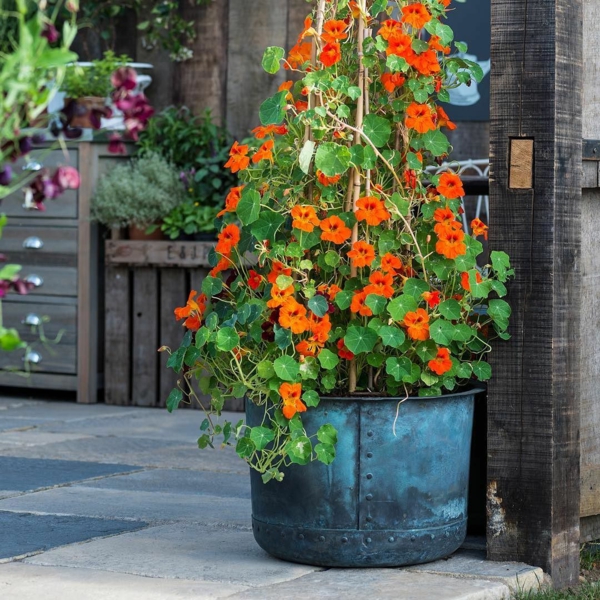
The high water content makes the plant very sensitive to cold
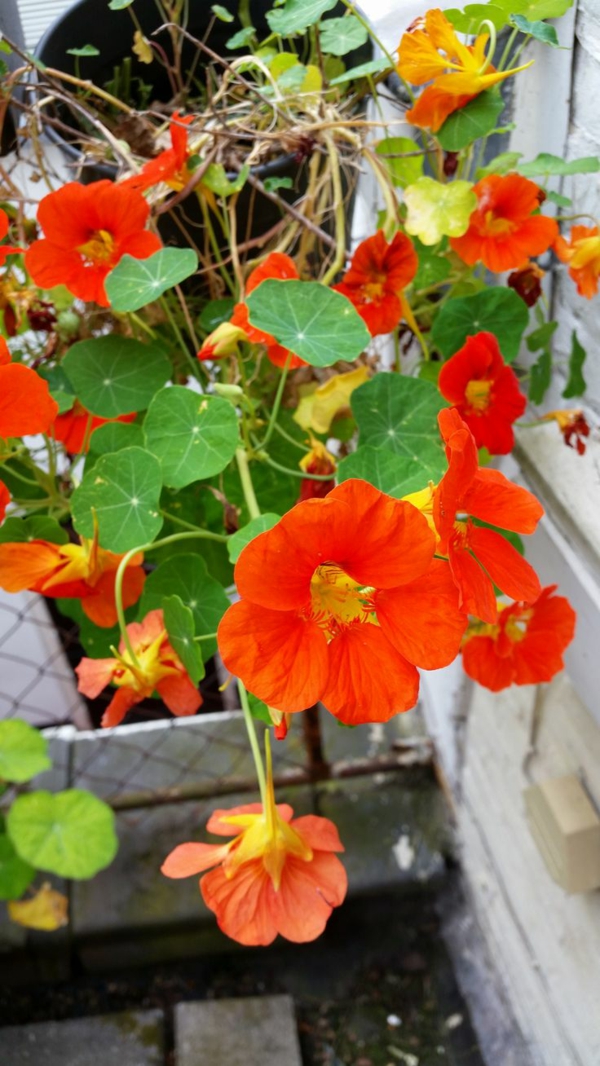
The nasturtium has a tropical origin
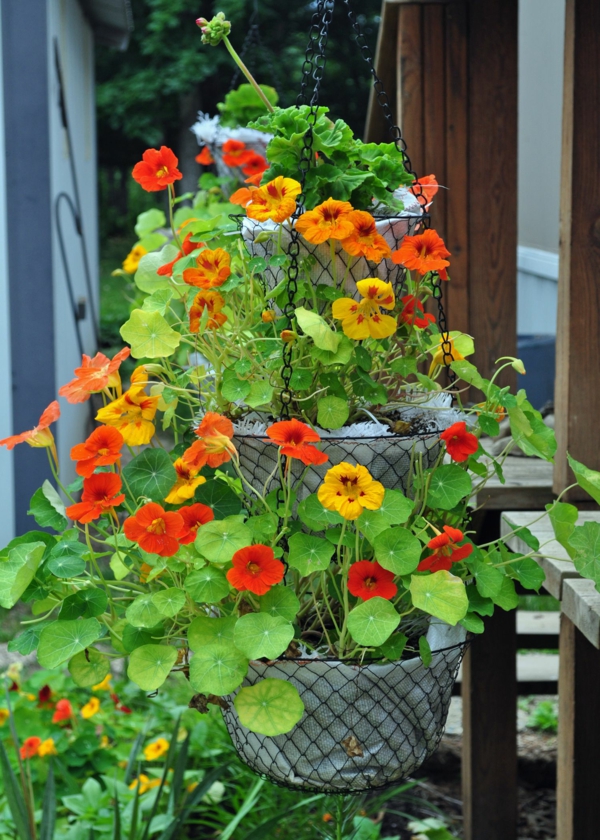
For a rich flowering, the location must get enough sunlight
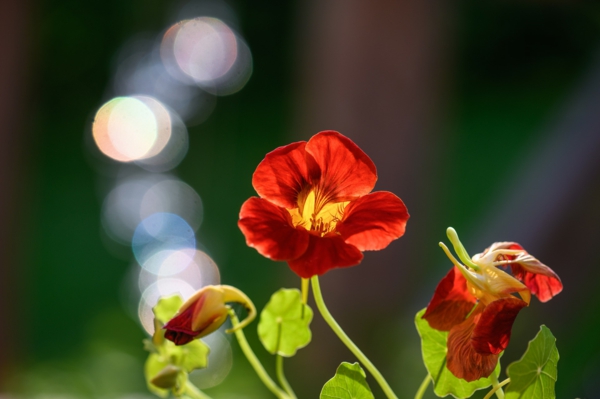
Too many nutrients in the soil damage the plant
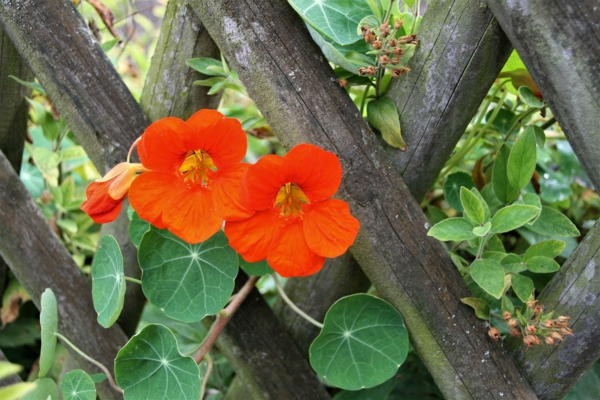
Plant the nasturtium again next year
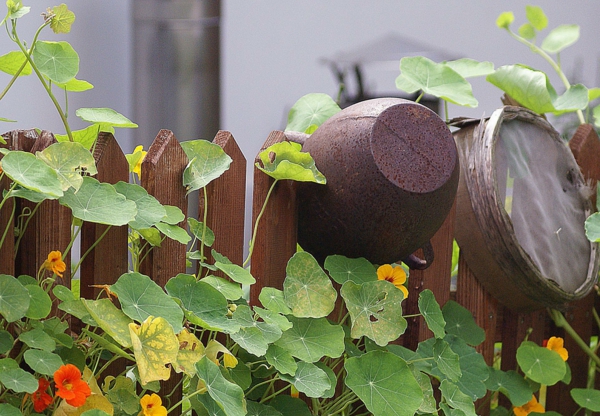
The flowers of the nasturtium have a pleasant pungent taste
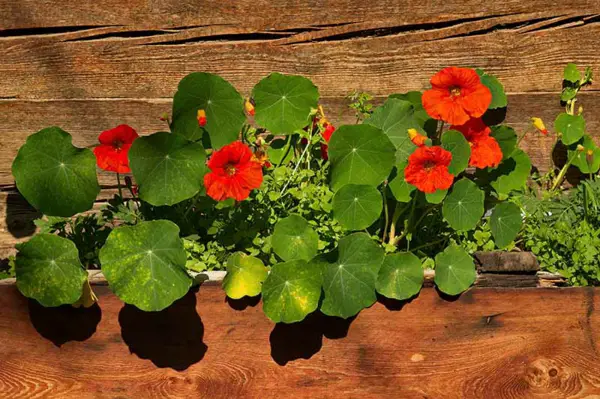
The nasturtium can also climb up
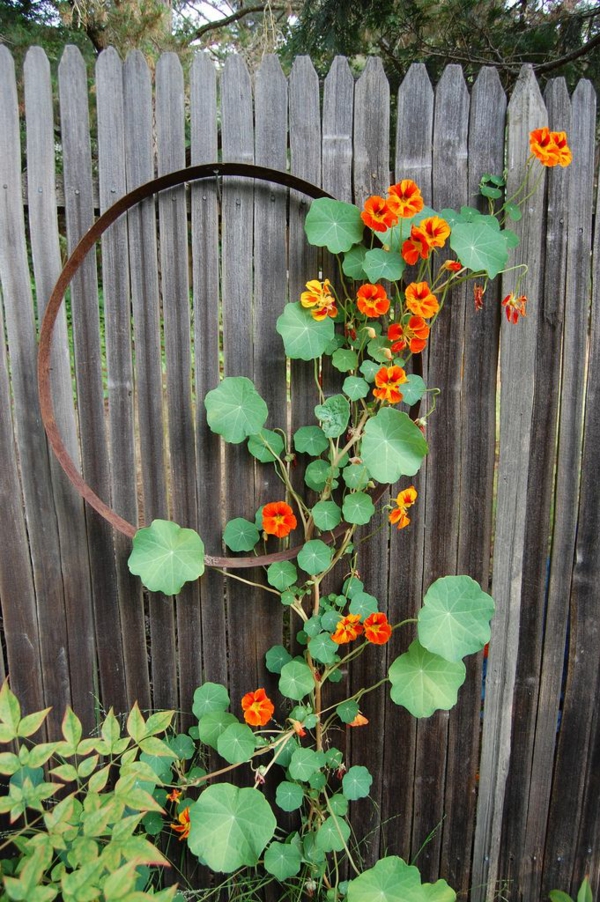
The large leaf dimensions is the reason for a high water requirement
